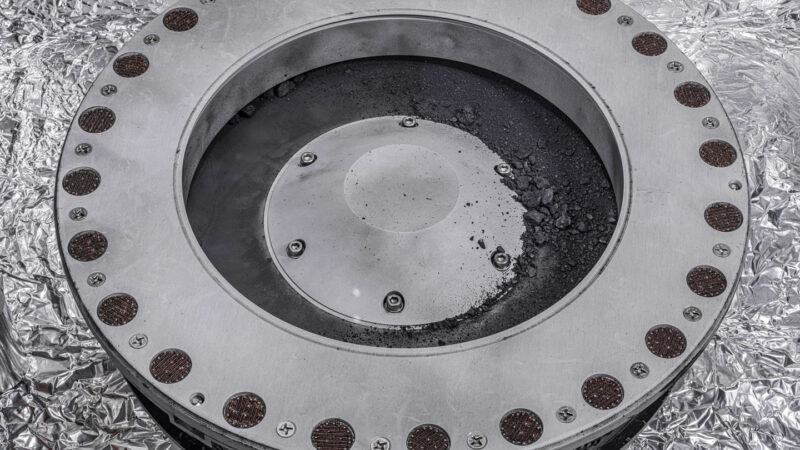NASA’s first look at a sample from asteroid Bennu reveals life’s building blocks

NASA scientists are just beginning to reveal details about roughly 250 grams of dust and rocks brought back to Earth from the asteroid Bennu. The samples are the result of the first U.S. mission to return a sample from an asteroid, and the largest cache of material ever collected beyond the orbit of the moon.
This mission is the beginning of “a new era of exploration, and this is the era of sample science,” said Makenzie Lystrup, director of NASA’s Goddard Space Flight Center in Greenbelt, Md., during a live streaming event on October 11. “This is when sample science really begins.”
The mission began seven years ago when the OSIRIS-REx spacecraft left Earth to rendezvous with Bennu, a near-Earth asteroid that may hold clues to the formation of the solar system and the origin of life on Earth. OSIRIS-REx lightly touched down on Bennu in 2020, scooped up a coffee cup–sized sample and sealed it away for the long trip back home (SN: 10/21/20) .
OSIRIS-REx jettisoned its sample return capsule back to Earth on September 24 (SN: 9/22/23). The spacecraft continued on its way, under the new name OSIRIS-APEX, as it headed out on its next mission — going into orbit around the near-Earth asteroid Apophis.
The capsule containing the Bennu samples parachuted down to a desert landing site in Utah, where it was picked up and helicoptered to NASA’s Johnson Space Flight Center in Houston. NASA scientists carefully opened the capsule in a dedicated clean room designed to ensure that the pristine asteroid material wouldn’t be contaminated by any terrestrial material.
The material in the capsule was collected by blowing dust and rocks into a container with blasts of nitrogen gas. The sample consists primarily of asteroid material from as deep as 50 centimeters below the surface (SN: 12/12/19). Additional dust and grit that adhered to the spacecraft landing pads when OSIRIS-REx touched down on Bennu will offer a look at the composition of the surface of the asteroid.
The mission returned some bonus material as well, in the form of loose debris that was inadvertently kicked up into the capsule in the area around the collection container, prior to the capsule sealing up for the trip home. The science team has delayed opening the main sample canister, instead taking time to collect and analyze the bonus sample.
Much of that material is made up of water-bearing clay minerals. “The reason that Earth is the habitable world that we have, with oceans and lakes and rivers and rain,” said planetary scientist Dante Lauretta of the University of Arizona in Tucson, who leads the OSIRIS-REx mission, “is because these clay minerals, like the ones we’re seeing from Bennu, landed on Earth 4 billion years ago to 4.5 billion years ago, making our world habitable.”
Other grains contain elements common on Earth, including carbon and iron, Lauretta said, as well as platelike sulfur structures that may have been crucial for jump-starting life.
A quarter of the Bennu sample will go to scientists on the OSIRIS-REx mission for analysis. The rest will be divvied up among scientists around the globe, with a portion set aside for future study.
“This stuff is an astrobiologist’s dream,” said Daniel Glavin, a senior scientist for sample return at Goddard. “I just can’t wait to get at it. And this material will be around for generations and generations.”
For all the latest Technology News Click Here
For the latest news and updates, follow us on Google News.
